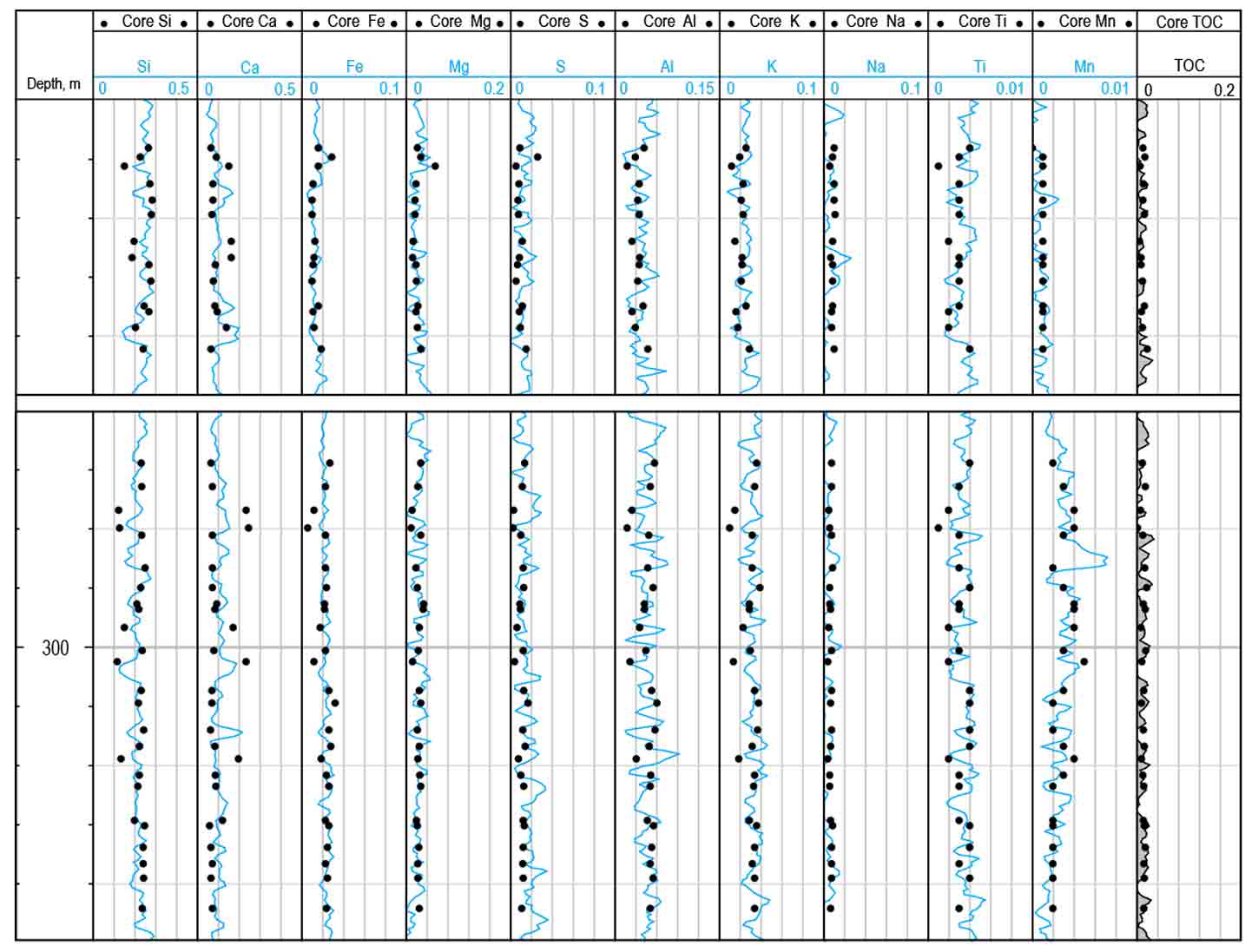Unlock the key elements of your reservoir—including stand-alone TOC.
Accurate Porosity and Kerogen Volume for Shale Gas Reservoir
Published: 07/09/2012

Accurate Porosity and Kerogen Volume for Shale Gas Reservoir
Published: 07/09/2012

Lithologically complex shale gas reservoir
A Canadian operator needed to determine reservoir quality, including porosity and kerogen volume, in a lithologically complex shale gas reservoir comprising multiple clay types in addition to quartz, feldspar, calcite, dolomite, ankerite, and pyrite. But petrophysical models using conventional resistivity, porosity, and acoustic logs are insufficient for accurately quantifying the complex formation lithology and kerogen volume, which is a necessary step in accurately determining porosity and reservoir quality.
Accurate, quantitative elemental concentrations and TOC
New Litho Scanner high-definition spectroscopy service revolutionizes gamma ray spectroscopy to enable the detailed description of complex reservoirs. In addition to measuring key elements in a wide variety of rock formations with higher precision and accuracy than previously possible, Litho Scanner service provides a stand-alone quantitative determination of TOC, independent of formation porosity, resistivity, and salinity.
Litho Scanner service's TOC output is based solely on the tool's direct measurement of both the carbon elemental concentration and accurate quantification of the carbonate minerals in the formation, which determines the carbon content associated with those minerals. The difference between the two is the TOC presented as a continuous log, available at the wellsite instead of waiting for laboratory core analysis. Matrix density is obtained from Litho Scanner service's elemental weight fractions and corrected for TOC. The corrected matrix density in conjunction with the conventional bulk density measurement provides accurate porosity.

TOC-corrected matrix density and porosity
The large number of elemental weight fractions measured by Litho Scanner service were used in the Techlog Quanti multicomponent inversion ELANPlus module to readily solve for the complex formation lithology. Excellent agreement was again obtained to core measurements, as shown in the top log.
An accurate matrix density is required to compute the correct porosity from a bulk density measurement. However, the grain density determined from the elements does not account for kerogen in the rock, which makes it heavier than the grain density obtained from core, as shown in Track 2 on the bottom log.The TOC (Track 1) was used to correct the grain density computed from the elements to provide significantly better agreement with the core-measured grain density (Track 2). The corrected grain density is based entirely on Litho Scanner service's measurements, so it is obtained as a stand-alone, single-tool output.
Total porosity calculated using bulk density and the matrix density corrected for organic carbon shows much better agreement with the core porosity measurements (Track 5) compared with the uncorrected porosity in Track 4.


Challenge: Determine porosity and kerogen volume to identify reservoir quality with greater accuracy than possible when using a petrophysical model of conventional log data for a complex shale gas reservoir.
Solution: Run Litho Scanner high-definition spectroscopy service to measure extremely accurate elementary concentrations for determining dry-weight total organic carbon (TOC) without introducing variability from other logging services and laboratory analyses.
Results: Accurately and quantitatively determined the TOC weight fraction and matrix density corrected for TOC, which was used with the bulk density measurement to accurately determine porosity and identify reservoir quality.
